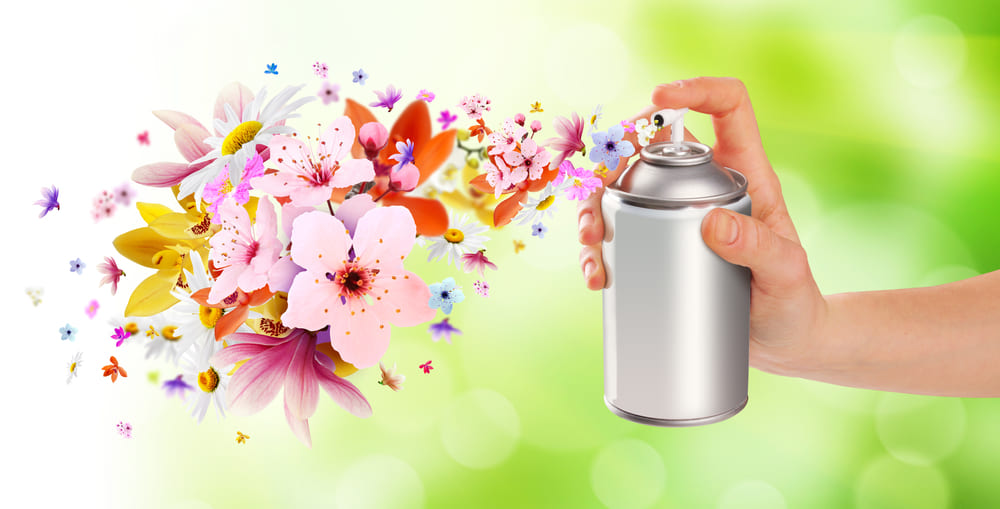Synthetic air fresheners invoke ideas of fresh ocean breezes, floral fields, and perfumes by the press of a finger from a can or whiff from an impregnated tree dangling from the rear-view mirror. We use them daily to negotiate common household smells like dirty laundry, garbage cans, kitchen, and bathroom odors. We think that with a spray or two, or with a plug-in air-freshener, we’ve won the war on foul stench and somehow the aromatic air we inhale is now purified and emblematic of hygiene. A huge gap lies between our assumptions and reality.
Air fresheners and indoor air pollution
So-called air fresheners do nothing of the sort. They contain a mixture of volatile organic compounds (VOCs) and fragrances that at best cover up odors. Their use increases the concentration of toxic compounds in the air we breathe and help explain why investigations into air quality find the concentration of air pollutants in our homes is higher than outdoors. Plug-ins, detergents, cleaning agents, sanitizers, fabric softeners, candles, natural gas and off gassing furniture and paints all contribute to total indoor air pollution load. Overall, indoor volatile organic compounds that are typical in fragrances are believed to be two to five times higher than the outdoors. According to a University of Washington study of eight commonly used air fresheners, they contained an average of eighteen chemicals; nearly half of them are known to be hazardous. Other researchers found that carcinogenic VOCs chloroform, formaldehyde, and styrene were two to fifty times higher in indoor air than outdoor air.
Hazards of volatile organic compounds
VOCs are petrochemicals extracted from oil and natural gas, often used as fragrances in air fresheners, perfumes, colognes and a variety of other body products. Many VOCs are known carcinogens like formaldehyde. According to the EPA, half of all air fresheners tested released the carcinogen acetaldehyde. Acetaldehyde, along with eighty-eight other contaminants was detected by the Environmental Working Group in the air freshener Febreze Air Effects. And when Steinemann et al. reviewed twenty-five household products, they found 133 unique VOCs among them.
Common symptoms of VOC exposure in some include irritation of the eyes, nose and throat, allergy symptoms, and asthma attacks in those susceptible. Effects from long-term exposure include central nervous system problems and cancer. A class of VOCs known as phthalates, used in fragrances, is an endocrine disruptor linked to reproductive birth defects in males. Other VOCs like synthetic musks are linked to allergies and hormone disruption.
Are there alternatives to air-fresheners?
As a doctor, I take exception to airborne poisons masquerading as fragrances. Harmful effects of VOCs are well documented, but even suspicion should be enough to avoid them. Because toxins can alter, trigger allergies and asthma attacks, cause irritation, disrupt hormonal function, and even contribute to cancer risk, they are best not used. Instead of increasing your families’ exposure to toxic indoor air pollutants from air fresheners, decrease or remove the source of odor and push contaminated air out through open windows with floor and ceiling fans. An open box of baking soda can be used to effectively absorb odors also. Natural air-fresheners that don’t contain VOCs but use extracts of essential oils instead may be safer options.



